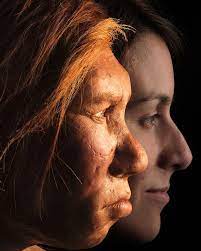The Theory of ‘Three Human Species’
In the world of anthropology, there has long been a debate surrounding the origins of modern humans and the evolutionary processes that led to our existence. One theory that has gained attention in recent years is the concept of ‘Three Human Species.’ This theory suggests that instead of a single lineage, there were three distinct species of humans that coexisted and interacted at various points in history.
According to this theory, the three human species are Homo sapiens, Neanderthals, and Denisovans. Homo sapiens, which includes modern humans, emerged in Africa and eventually spread across the globe. Neanderthals, on the other hand, inhabited Europe and parts of Asia, while Denisovans were found in Asia, particularly in Siberia.
The theory proposes that these three species shared a common ancestor but developed independently over time, leading to distinct physical and genetic characteristics. While Homo sapiens are known for their advanced cognitive abilities and complex social structures, Neanderthals and Denisovans had their unique adaptations and cultural practices.
Evidence for the existence of these three human species comes from genetic studies and fossil findings. Researchers have sequenced the genomes of ancient humans and discovered that modern humans have a small percentage of Neanderthal and Denisovan DNA in their genetic makeup. This indicates that interbreeding between the different species occurred at some point in the past.
Fossil remains have also provided insights into the physical characteristics of these species. Neanderthals, for instance, had a robust build with a prominent brow ridge and a stockier frame compared to Homo sapiens. Denisovans, on the other hand, are known from a limited number of fossils, making it challenging to ascertain their physical traits accurately.
The theory of Three Human Species challenges the traditional view of human evolution, which posits a linear progression from ancestral species to modern humans. Instead, it suggests a more complex picture of our evolutionary history, with multiple species coexisting and intermingling throughout time.
Understanding the existence of different human species not only expands our knowledge of human evolution but also raises questions about the nature of our interactions with these other species. Did they compete for resources, or did they engage in cultural exchanges? How did interbreeding affect the genetic diversity and adaptation of modern humans?
Further research and exploration are necessary to unravel the complexities of human evolution fully. The Theory of Three Human Species offers a compelling framework for understanding our past and provides new avenues for investigating our shared heritage with Neanderthals and Denisovans. By piecing together the puzzle of our evolutionary history, we can gain a deeper appreciation for the rich tapestry of human existence.
Hits: 1







